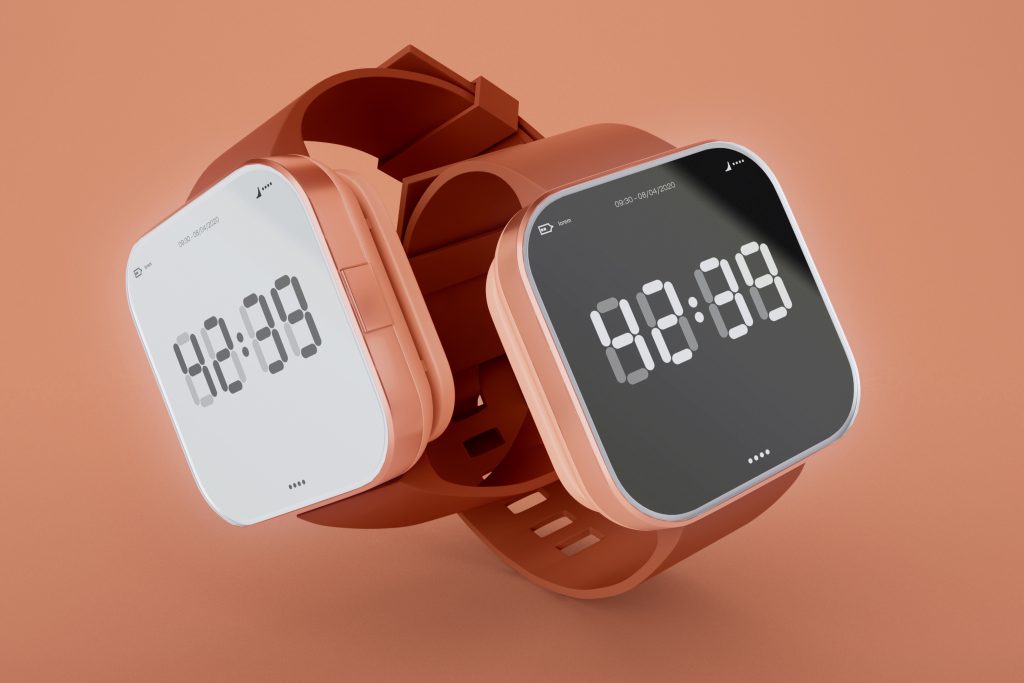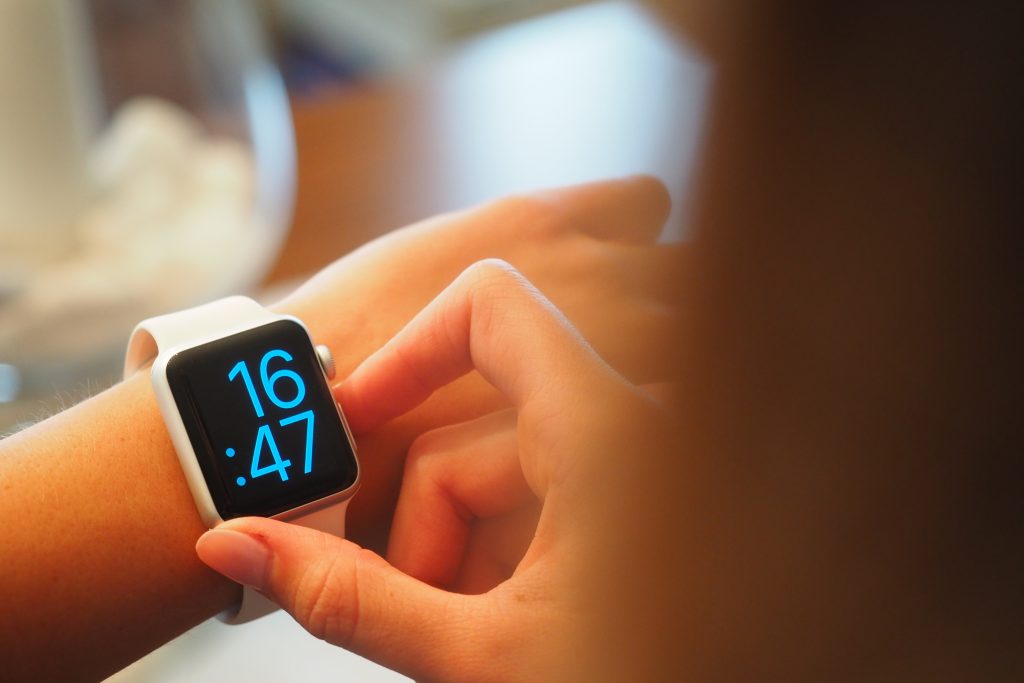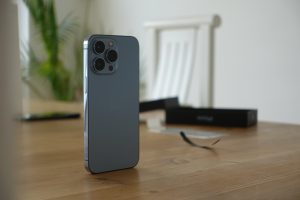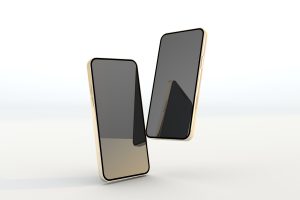The Pros And Cons Of Owning A Smartwatch: Is It Worth It?
8 min read
Smartwatches have become increasingly popular in recent years, but is owning one really worth it? While they offer a range of features and conveniences, there are also potential downsides to consider.
The rise of technology has brought about a multitude of innovations, and smartwatches are no exception. These wearable devices have gained popularity for their ability to provide notifications, track fitness activities, and even make phone calls. However, like any new gadget, there are pros and cons to owning a smartwatch.
If you’re contemplating whether or not to invest in a smartwatch, it’s important to weigh the advantages and disadvantages. While they can certainly enhance your daily life in various ways, there are also drawbacks that may make you reconsider. In this article, we will explore the pros and cons of owning a smartwatch to help you make an informed decision.
Pros of Owning a Smartwatch
Smartwatches have become increasingly popular in recent years, offering a variety of benefits and features that make them a valuable addition to daily life. From fitness tracking to receiving notifications and controlling your smart home devices, owning a smartwatch can offer numerous advantages that enhance productivity and convenience.

Convenience and Time-Saving Features
Smartwatches are packed with convenience and time-saving features that make them a must-have accessory. Besides being a stylish addition to any outfit, smartwatches offer multiple functions that can save users time and effort. One of the key benefits is fitness tracking, allowing users to monitor their workouts, steps taken, and calories burned without needing a separate fitness tracker. This seamless integration streamlines the fitness tracking process, making it more convenient for users to stay on top of their health goals.
In addition to fitness tracking, smartwatches also come with affordable pricing, making them accessible to a wide range of consumers. They offer a range of features typically found in high-end fitness devices at a fraction of the cost. On top of this, smartwatches provide time-saving functions like checking the weather at a glance, setting timers for various tasks, and even finding a misplaced phone with just a tap on the watch. These features eliminate the need to reach for a smartphone or search for other devices, saving users precious time throughout their day. Overall, smartwatches offer a blend of convenience, affordability, and time-saving features, making them a valuable addition to anyone’s daily routine.
Health and Fitness Monitoring Capabilities
Smartwatches are equipped with various health and fitness tracking capabilities that can help users monitor and improve their overall health and wellness. These features include heart rate monitoring, blood pressure monitoring, and activity tracking.
Heart rate monitoring allows users to keep track of their heart rate during exercise and throughout the day, helping them understand their cardiovascular health. Blood pressure monitoring can provide valuable insights into users’ blood pressure levels, enabling early detection of potential health issues. Activity tracking measures the user’s physical activity, such as steps taken, distance traveled, and calories burned, promoting a more active lifestyle.
These capabilities can help users improve their overall health and wellness by providing real-time data and insights into their fitness levels and encouraging healthy habits. For those managing chronic diseases, such as hypertension or diabetes, these features can be particularly beneficial in monitoring and managing their condition. Additionally, smartwatches with health and fitness tracking capabilities can also contribute to improving mental health by promoting physical activity and providing valuable feedback on overall wellness.
Ability to Receive Notifications and Calls
A smartwatch allows users to stay connected without the need to constantly check their phone for notifications and calls. Instant message and call notifications are seamlessly delivered to the smartwatch, allowing users to stay informed without needing to take out their phone. The watch also offers the convenience of being able to reply to messages and answer calls directly from the wrist, making it easy to stay connected on the go.
This quick access to notifications and the ability to decide on further action without needing to take out the phone is incredibly convenient, especially in situations where using a phone may be inconvenient or not possible. Whether in a meeting, out for a run, or simply wanting to stay discreet in a social setting, the smartwatch’s ability to handle notifications and calls without the need for a phone can be a game-changer.
Overall, the smartwatch’s feature of receiving and managing notifications and calls directly from the wrist offers users a seamless and convenient way to stay connected while on the move.
Customization Options
Users can personalize their experience with the product through various customization options according to their preferences. This includes options for color schemes, font styles, and layout choices.
To access these customization options, users can navigate to the settings menu within the product. Within the settings, they will find options to adjust the color scheme, allowing them to choose from a range of predefined color palettes or create a custom color scheme. Users can also select from a variety of font styles to personalize their reading experience, choosing from options such as serif, sans-serif, or script fonts. Additionally, layout options such as column width, spacing, and margin settings can be adjusted to suit the user’s preferences.
By providing these customization options within the settings menu, users can effortlessly personalize their experience with the product to best suit their individual preferences, promoting a more enjoyable and tailored user experience.
Long Battery Life and Durability
Smartwatches with long battery life are not only convenient but also durable and reliable for long-term usage. The limitations of battery technology make it crucial for smartwatches to efficiently maximize battery life. Extended battery life has a significant impact on the overall durability and reliability of the smartwatch, as it reduces the frequency of charging and extends the lifespan of the device.
Key features that contribute to both long battery life and durability include efficient power management, low-power consumption components, and optimized software that minimizes battery drain. Additionally, durable materials such as stainless steel or reinforced plastics enhance the physical durability of the smartwatch, making it resistant to wear and tear.
Moreover, the reliability of a smartwatch with long battery life is bolstered by its ability to consistently perform without the need for frequent recharging, ensuring that it remains functional even during extended use.
Cons of Owning a Smartwatch
Owning a smartwatch can seem like a great way to stay connected and keep track of your fitness goals, but there are also some downsides to consider. From the cost and battery life to the potential distraction and privacy concerns, there are several cons to owning a smartwatch that should be taken into account before making a purchase.

High Price Tag for Some Smartwatch Models
Smartwatch models designed for fitness enthusiasts come with a high price tag, primarily due to their premium features and specialized functions. These smartwatches are equipped with advanced fitness tracking capabilities, such as heart rate monitoring, sleep tracking, and GPS integration for accurate distance and location monitoring during workouts.
In addition to the standard features, these premium fitness-focused smartwatches boast better durability, longer battery life, and more accurate location positioning, making them ideal for outdoor and intense workout activities. They also offer customizable buttons and extra features tailored to specific sports, such as swimming, cycling, and running. This allows users to track their performance and progress more effectively, ultimately enhancing their workout experience and results.
The high price tag for these smartwatch models is justified by the extensive range of functions and capabilities that cater to the needs of sports enthusiasts and fitness-focused individuals. Despite the cost, the added durability, extended battery life, and pinpoint accuracy in tracking make these smartwatches a worthwhile investment for those who prioritize their fitness and health goals.
Limited Compatibility with Different Devices
When purchasing a smartwatch for kids, it is essential to check for compatibility with different devices to ensure optimal functionality. Some smartwatches are designed to work only with specific smartphone models or operating systems, potentially limiting their capability and rendering them useless if they are not compatible with the child’s device.
The top 5 most popular devices or operating systems that smartwatches are commonly compatible with include iOS, Android, Samsung, Apple, and Huawei. It is important to consider the type of smartphone the child uses and ensure that the smartwatch is compatible with that particular device.
Ensuring compatibility between the smartwatch and the child’s device is crucial to guarantee that the smartwatch will function properly and provide all the intended benefits such as tracking features, messaging options, and other functionalities. Therefore, before making a purchase, it is imperative to research and check the compatibility of the smartwatch with the child’s device to avoid any potential limitations or issues. By doing so, parents can ensure that their child can make the most of their smartwatch experience.
Limitations in Functionality Compared to Traditional Watches
Smartwatches have revolutionized the way we interact with technology on a daily basis, but they still have limitations in functionality compared to traditional watches. While smartwatches can perform various tasks such as receiving notifications, tracking fitness, and making calls, they are often limited in features and capabilities compared to digital watches. For example, traditional watches have long-lasting battery life, while smartwatches require frequent charging. Smartwatches may also lack the durability and water resistance that traditional watches offer.
In certain situations, smartwatches may not be as reliable as traditional watches. They depend on a smartphone connection and may not function properly if the device is out of range. Additionally, smartwatches often lack the simplicity and elegance of traditional watches, as they can be bulky and may not suit formal occasions.
While smartwatches offer innovative technology and convenience, they still have limitations in functionality when compared to traditional watches, particularly in terms of features, reliability, and elegance.
Possibility of Distraction from Notifications or Calls
To minimize distractions from notifications and calls on a smartwatch, it’s important to manage them effectively. Most smartwatches offer the ability to interact with notifications, allowing users to quickly view and respond to messages without having to pull out their phone. However, it’s important to be mindful of the frequency and types of notifications that are coming through to avoid unnecessary interruptions.
One way to manage distractions is to turn off social media notifications on the smartwatch. This can be done by accessing the settings menu and customizing which apps are allowed to send notifications to the device. By doing this, users can limit the number of non-essential notifications and focus on more important alerts.
It’s also important to understand the difference between standalone and Bluetooth-dependent smartwatches. Standalone smartwatches are capable of functioning independently of a smartphone, allowing users to make calls, send messages, and use apps directly from the device. This can help minimize distractions as users can leave their phone behind and still stay connected. On the other hand, Bluetooth-dependent smartwatches rely on a connected smartphone for full functionality, which may result in more frequent notifications and distractions.
By managing notifications, turning off social media alerts, and considering the type of smartwatch, users can minimize distractions and optimize their smartwatch experience.
Conclusion
In conclusion, owning a smartwatch can be a great way to stay connected and organized, but it has its drawbacks. Smartwatches are still relatively new technology, so there is likely to be some bugs or issues that need to be worked out. Additionally, the cost of owning one can add up quickly if you opt for all the bells and whistles available. It’s important to do your research before investing in a smartwatch to make sure it’s the right fit for your lifestyle and budget. With the right smartwatch, you can enjoy a lot of convenience, connectivity, and style.




